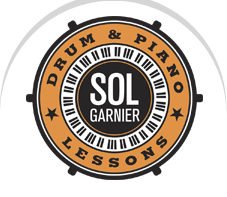Humanity used to listen to music once and then move on. The commoners would go to a concert or a ball room, enjoy the live musicians, and then return home where there was usually no music. If they wanted to relive the experience of music, they only had their memories, or they could sing. Or whistle.
Now, I know that people had musical instruments at home and that composers made their money by selling the music sheet of their creations. But we are talking about a more urban setting already, a community that would have music stores. And humanity, all the way up to the 1910’s, let’s say, was mainly composed of farmers, people in small villages, small towns, not the cities we live in today.
So for a very long time if you wanted to listen to some music, you either get the skills to play or you hire people who already have them.
Then came the technology fairy. All of the sudden people could listen to music over and over again. The musicians were inside the little grooves carved in the wax. But discs were expensive and few and far between at first. I would roughly estimate that an average family would have 10 recordings, maybe 20. Which means that they listened over and over again to the same music. Let me tell you, when you have a limited collection of discs, you have no bad ones because even the bad ones you play them on repeat, you learn to appreciate them, and even if you don’t appreciate them at all, you know them by heart because that’s all you got.
That phenomenon helped at least one thing: to spread music all over the globe. Instead of being enjoyed by a selected few, it was shared with everybody, it became democratic.
The technological fairy wasn’t done, though. Came the digital world, the one who’s holding our hands now. Music was everywhere, musicians thriving and creating from Timbuktu to Anchorage, from Monteverdi to Jack White. At our fingertip we could get immersed in the sensual rhythms of Brazil or the odd ones from Eastern Europe (the balkans has a ton of odd meters like 5/8 or 7/4. Yes, they are called “odd” rhythm, that’s the technical term, I’m not mocking them).
Now we have 5 million songs, 10 millions songs, 2465 gazillion songs to listen to. We are bombarded with suggestions, with playlist, with related artists, related styles, related songs. Everyone is into something different. In the old days, when you asked someone what they listened to, they would answer: “Oh, the usual The Beatles, The Stones, The Beach Boys, whatever is playing on the radio.” Ask the same question today and you get: “Oh, I’m pretty sure you wouldn’t know most of the people on my playlist, for example “Max Pudding and his Raisins” or “The Big Fat Toes”.
We have lost something, though, have you noticed? Anybody? Anybody?…
We’ve lost the music we used to listen to over and over again. Those plastic records of yesteryear’s are gone. Now, I would admit that it was a pain really. You had to store them, physically put them on the machine that spins them, Madré de Dios, the misery, the effort! Then you can’t listen to something else while it’s going. And the number of disc you own is limited because even if you have all the money of the world, you don’t have all the storage of the world. It was dreadful, I tell you, we barely survived.
I miss that time (big sigh). Actually, no, I do not. I’m perfectly happy with what I’ve got. I do listen to digital music on Tidal, but I got myself a crummy little CD player and I listen to them round things at least as much as what’s on the waves. But I cheat because the purpose of this blog was to emphasize that it’s good to listen to things over and over again, and I don’t. I have too many CD’s to know them by heart.
